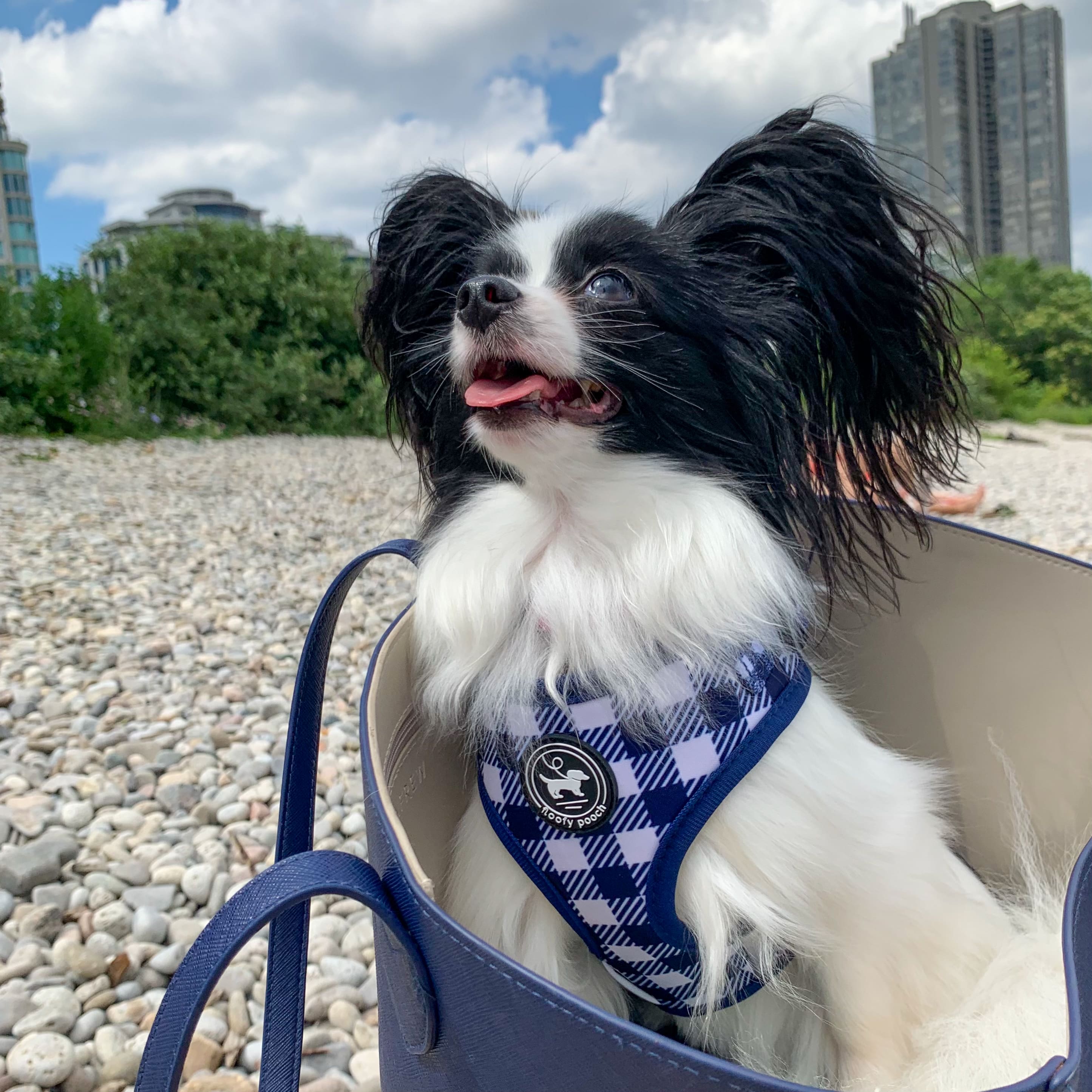Choosing the right harness for your dog can make a significant difference in both your dog's comfort and safety. Not all harnesses are made equal, and the best choice often depends on your dog's size, breed, and temperament. In this guide, we'll walk you through the factors to consider when selecting the perfect harness for your floofy friend.

1. Measure Your Dog
Before you even start looking at harnesses, it's crucial to know your dog's measurements.
- Neck Size: Measure around the base of your dog’s neck.
- Chest Size: Measure the widest part, usually right behind the front legs.
Having these measurements will help ensure you get a harness that fits snugly without being too tight.
2. Determine the Harness Type
There are several types of harnesses available:
- Back-Clip Harness: Ideal for calm dogs as the leash attachment is on the back.
- Front-Clip Harness: Helps redirect dogs that pull, with the leash attachment on the chest.
- Dual-Clip Harness: Offers both front and back attachments for versatility.
For a selection of high-quality harnesses, check out Floofy Pooch's Harness Collection.

3. Check for Adjustability
Look for harnesses that offer multiple adjustment points. This will help ensure a comfortable and secure fit, especially as your dog grows.
4. Material Matters
Consider the material of the harness:
- Neoprene: Lightweight and durable, suitable for most dogs.
- Leather: Long-lasting and strong for larger breeds, but can be more expensive.
- Mesh: Comfortable for smaller breeds and most climates.
5. Reflective or Padded Features
Harnesses equipped with reflective elements are not just a fancy addition; they're a safety essential, especially for evening or early morning walks. Reflective harnesses bounce back light from streetlamps, headlights, and other sources, making your dog more visible to drivers, cyclists, and others. This is particularly crucial in areas with limited lighting or during seasons with shorter daylight hours.
On the other hand, padded harnesses offer an additional layer of comfort. This padding is especially beneficial for dogs with shorter fur or sensitive skin, as it can prevent chafing and discomfort. When selecting a padded harness, opt for one with breathable material to ensure your dog doesn't overheat, especially in warmer climates.
6. Ease of Use
Harnesses that are intricate might look secure, but they can be a challenge to put on, especially if your dog is restless or impatient. A harness that's complex can deter owners from using it, defeating its purpose.
When evaluating ease of use, also consider how simple it is to adjust the harness. A harness that's easy to tweak ensures a better fit and can accommodate changes in your dog's size or weight.
7. Consider Special Needs
Every dog is unique, and their harness should reflect that.
-
Pullers: Dogs that have a tendency to pull require a harness that redirects their energy without causing harm. Front-clip harnesses serve this purpose by redirecting the dog to face you when they pull, naturally discouraging the behavior.
-
Escape Artists: Certain breeds, or particularly nimble dogs, have mastered the art of wriggling out of their harnesses. For these Houdinis, a secure, escape-proof design is vital. Look for harnesses with multiple adjustment points and a snug fit around the chest and neck.
-
Activity Level: Dogs engaged in rigorous activities, like trail running or mountain hiking, need harnesses built for the task. These might come with reinforced stitching, handles for lifting, and attachments for gear. They're designed to be both durable and comfortable for prolonged wear.
8. Reviews and Recommendations
Lastly, don't underestimate the power of reviews. See what other dog owners are saying about the harness you're considering. Personal recommendations from friends or trainers can also be invaluable.

Choosing the right harness can take some time and research, but the comfort and safety of your dog are worth the effort. Remember to check the fit regularly and adjust as needed, ensuring your pup is always secure and comfortable.


